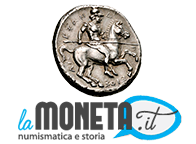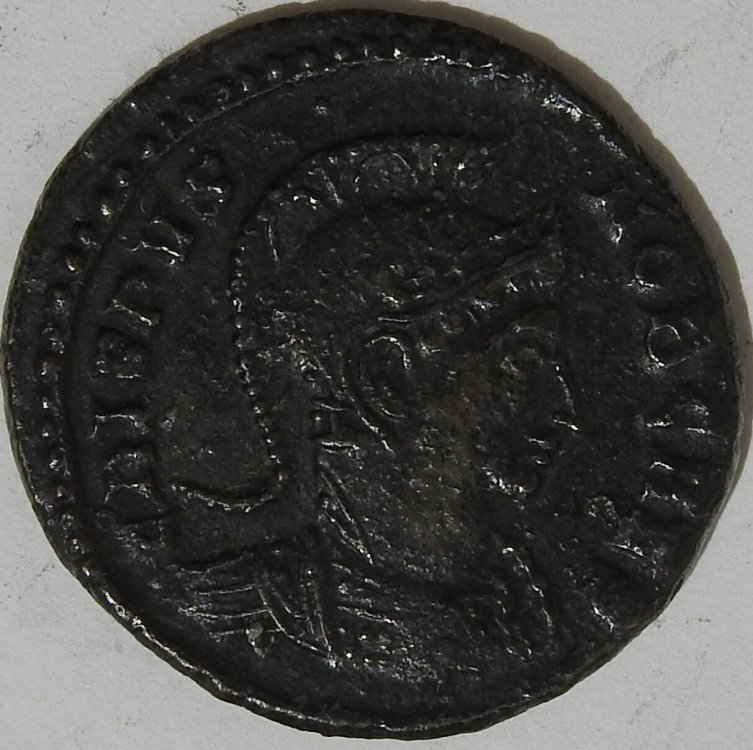Cerca nel Forum
Risultati per Tag 'crispo'.
Trovato 2 risultati
-

Crisopoli, Costantino chiude il cerchio e conquista l'Impero (ovvero la fine del sogno tetrarchico)
Illyricum65 ha aggiunto un nuovo link in Monete Romane Imperiali
Buongiorno, ho trovato questo interessante video che descrive bene il quadro al termine della Tetrarchia e la battaglia decisiva per la sua fine. Approfitto dell'occasione per creare un post "multimediale". Ok, la Storia... ma le monete? Ve le propongo di seguito in quanto testimonianze dei protagonisti dell'evento. Gli sconfitti: LICINIO I: https://www.coinarchives.com/8537309bcff9d6960ecf0ddeca7a9abd/img/roma/020/image00687.jpg Roma Numismatics Ltd > Auction XX Auction date: 29 October 2020 Lot number: 687 Price realized: 48,000 GBP (Approx. 61,943 USD / 53,123 EUR) Note: Prices do not include buyer's fees. Lot description: Licinius I AV Aureus. Nicomedia, AD 321-322. LICINIVS AVG OB D V FILII SVI, bare-headed, draped, and cuirassed bust facing / IOVI CONS LICINI AVG, Jupiter, holding Victory on globe in right hand and sceptre in left, seated facing on high-backed throne set on platform inscribed SIC•X• SIC•XX• in two lines; at feet to left, eagle standing left, head right, holding wreath in beak, SMNΔ in exergue. RIC 41; Depeyrot 31/1; Alföldi 262; Calicó 5094; Hunter -. 5.30g, 22mm, 11h. Fleur De Coin. Very Rare; in an exceptionally high state of preservation - certainly one of the finest specimens known. From the Long Valley River Collection; Ex Numismatica Ars Classica AG, Auction 100, 29 May 2017, lot 631 (hammer: CHF 70,000); Ex A. Tkalec AG, 24 October 2003, lot 412. This aureus is immediately striking for its facing portrait, a conceit rarely seen on Roman coins up until this date and not fully adopted until decades later in the 4th Century. Gold issues of Maxentius and Constantine bearing facing portraits, dating to the 310s, are the most obvious candidates for the inspiration behind this example, although some apparent innovation is extant in this aureus. The coins of the later Roman empire and onwards into the Byzantine period that are most associated with facing portraits routinely portray their subjects in a formulaic and generic manner, with little to distinguish between the physiognomical characteristics of the various emperors depicted, whereas this portrait of Licinius intimates at an intention to reflect his genuine appearance; a continuation and development of the images on the coins of Maxentius and Constantine, which were still heavily influenced by tetrarchic ideals of uniformity. When considered alongside the best known sculptural portrait of Licinius in the Vatican Museums (XL VII 19 (511 B)), there are parallels in Licinius' depiction on this coin. Although the aureus' portrait is inherently more schematic by virtue of its medium, it is possible to see similarities in the wide eyes, positioned slightly too close together, the raised brows and the pronounced lines around his mouth and nose. A marble head in the Kunsthistorisches Museum in Vienna has also been attributed as Licinius in a compelling argument by R. R. R. Smith (The Public Image of Licinius I: Portrait Scuplture and Imperial Ideology in the Early Fourth Century, The Journal of Roman Studies, vol. 87, 1997, pp.170-202), in which he specifically cites its relationship to the numismatic portraits as part of his reasoning behind the attribution (p.188). This further metes out the view that there was an attempt at individuality in the image of Licinius presented here. While the obverse of this coin illustrates stylistic idiosyncrasy, the symbolism of the reverse iconography is indicative of the unsettled times in which this aureus was issued. In terms of technical skill and artistry, the die cutters have surpassed the quality on the obverse, achieving extraordinary detail in the depiction of Jupiter enthroned, but the semantic context of this image provides an insight into the state of the relationship between Licinius and his co-emperor Constantine in this period. At surface level this coin, minted seemingly as part of his decennalia issue, can be read as Licinius simply giving thanks for his first ten years of co-rule with Constantine and seeking divine favour for another ten years, however the presence of OB D V (ob diem quinquennalium) in the obverse legend denotes this as marking the fifth year since his son, Licinius II, was pronounced Caesar. The presence of Jupiter, a standard type at Nicomedia, is a reflection of the differing faiths between the two emperors; as Constantine moved closer to monotheism and the Christian God, adopting the Chi-Rho symbol as a regular shield and standard device, Licinius staunchly upheld the supremacy of the traditional Roman pantheon, affiliating himself with Jupiter, who is portrayed as his patron and protector on most of his coinage. It is somewhat ironic that the year of his decennalia in 317 perhaps marked the end of peaceful co-rule with Constantine, and by the time at which this particular coin was issued it would be only a few years before the outbreak of civil war between the two emperors in 323. This conflict played out across several battles and eventually resulted in Licinius' defeat at the Battle of Chrysopolis in 324 where Constantine's army fought under standards emblazoned with the Chi-Rho symbol, opposing Licinius' battle lines which were adorned with images of the gods of the Roman pantheon. Thus did the battlefield aptly mirror the succinct imagery of their respective coinage on a monumental scale. Estimate: 45000 GBP https://www.coinarchives.com/640e80e326f7412e2327d478ad5f56f8/img/roma/e78/image01778.jpg Roma Numismatics Ltd > E-Sale 78 Auction date: 17 December 2020 Lot number: 1778 Price realized: 55 GBP (Approx. 74 USD / 61 EUR) Note: Prices do not include buyer's fees. Lot description: Licinius I BI Nummus. Antioch, AD 321-323. IMP C VAL LICIN LICINIVS P F AVG, radiate, draped and cuirassed bust to right / IOVI CONSERVATORI, Jupiter standing to left, holding Victory on globe and sceptre, eagle with wreath before, captive behind; X-IIΓ in right field, SMANTZ in exergue. RIC VII 35. 3.49g, 18mm, 11h. Extremely Fine. Very Rare. From a private UK collection. Estimate: 75 GBP https://www.coinarchives.com/a/lotviewer.php?LotID=1761703&AucID=4049&Lot=1778&Val=98d70cf511a883350169042469581a1c MARTINIANUS: https://www.coinarchives.com/fc70d71a7fa226e4de0a82732db23200/img/roma/020/image00695.jpg Roma Numismatics Ltd > Auction XX Auction date: 29 October 2020 Lot number: 695 Price realized: 1,900 GBP (Approx. 2,452 USD / 2,103 EUR) Note: Prices do not include buyer's fees. Lot description: Martinian Æ Nummus. Nicomedia, AD 324. D N M MARTINIANO P F AVG, radiate, draped and cuirassed bust right / IOVI CONSERVATORI, Jupiter standing left, holding Victory on globe in right hand and eagle-tipped sceptre in left, captive on ground to right, X-IIΓ above, eagle to left holding wreath in beak; SMNΔ in exergue. RIC 46. 2.46g, 20mm, 11h. Good Very Fine. Very Rare. From the inventory of Roma Numismatics Ltd. Estimate: 2500 GBP https://www.coinarchives.com/a/lotviewer.php?LotID=1714731&AucID=3897&Lot=695&Val=da70245082275691765b19474e59ffc5- 8 commenti
-
- 2
-

-

-
- costantino
- licinio
-
(e altri 2 tag)
Taggato come:
-

Crispo antoniniano Treviri?
sgama1975 ha aggiunto un nuovo link in Richiesta Identificazione/valutazione/autenticità
CARATTERISTICHE PRINCIPALI Peso: 2,5 gr Diametro: 19 mm Metallo Presunto: AE Ciao a tutti, su questa moneta non ho dubbi riguardo all'autenticità ma mi piacerebbe trovare una descrizione di quello che vedo sulle sue facce è magari anche sapere se è comune o altro. Per esempio, da cosa si capisce che si tratta di Treviri?- 15 commenti
-
- crispo
- antoniniano
-
(e altri 1 tag)
Taggato come:
Lamoneta.it
La più grande comunità online di numismatica e monete. Studiosi, collezionisti e semplici appassionati si scambiano informazioni e consigli sul fantastico mondo della numismatica.
Il network
Hai bisogno di aiuto?



